
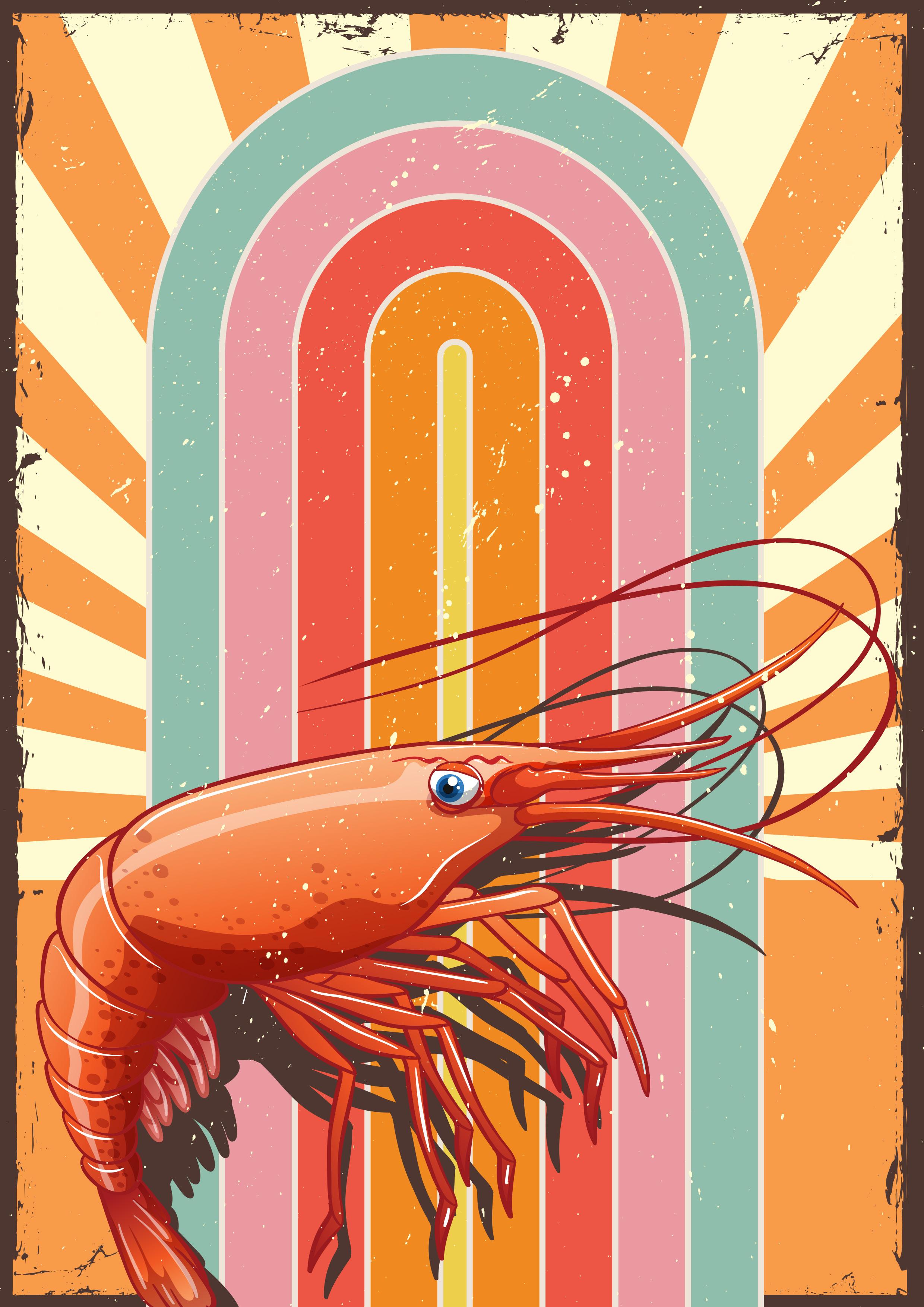
Hello, esteemed readers, and welcome to the March issue of THE CRUST! This month, I had the privilege of presenting my insights at Aquatic Asia, an annual aquaculture event held in Bangkok. It was an honor to discuss survival strategies tailored to the current state of the shrimp industry, which, as echoed repeatedly in recent months, faces a challenging ‘bearish’ climate. In such uncertain times, adaptation is imperative, and companies must craft resilient strategies to endure.
Among the strategies I advocated during my presentation was the notion of integration. I emphasized the benefits of expanding operations to gain greater control over the supply chain, particularly in light of today’s escalating traceability concerns. However, I cautioned against hasty expansions, urging farmers to assess the state of their local aquaculture industry before venturing into unfamiliar sectors.
During one of the conferences, an audience member asked about my expansion plans, specifically into the feed mill business. I promptly clarified that we currently have no intentions in

CEO
CHIEF EDITOR OVERVIEW
that direction. I cited the oversaturated shrimp feed market in Indonesia as a deterrent. Production capacity far exceeds demand, resulting in widespread challenges for feed mills and significant losses. This prudent approach underscores the importance of informed decisionmaking and seeking guidance from industry experts before venturing into new territories.
In anticipation of our upcoming flagship event, the Shrimp Aquaculture Conference, I’m thrilled to extend a warm invitation. Months of meticulous preparation have culminated in an event designed to deliver unparalleled content and experiences for all attendees. If you haven’t already secured your spot, I encourage you to join us as we host experts from around the globe to share invaluable knowledge with fellow farmers. SAC2024 promises to be a monumental gathering, embodying our mission to disseminate knowledge, foster solidarity among stakeholders, and ignite greater interest in the industry. We eagerly anticipate your presence at this extraordinary event.
THE CRUST - RIZKY
Editor
 Rizky Darmawan Chief
Photo source : The CRUST
Rizky Darmawan Chief
Photo source : The CRUST
The
2 Issue 18 | Feb 2024
Ecuador and Lessons from Major
ARTICLE
Ecuador and India are both significant players in the global shrimp industry. In 2023, Ecuador is estimated to produce around 1.2 million tons of shrimp, while India’s production is nearing 1 million tons. Despite their comparable production volumes, they employ distinct approaches and strategies in shrimp production and tackling challenges. Therefore, it’s crucial for them to share insights with each other.
Manoj M. Sharma, Managing Director of Mayank Aquaculture Pte. Ltd., stated this during his discussion with Yahira Piedrahita, Executive Director of the National Chamber of Aquaculture (CNA) of Ecuador*, on Manoj’s personal YouTube channel recently.
Diseases Challenge
In the beginning, Manoj shared that he is currently considering whether to fill all of his shrimp ponds or only some to mitigate the risk of disease outbreaks, which are currently high in India. He noted that disease outbreaks have led to failure rates in India reaching 4045 percent.
On the contrary, Yahira pointed out that disease concerns are less prominent in Ecuador, where they don’t even use SPF shrimp larvae. They even “allow” pathogens to coexist with their shrimp. According to her personal opinion, a significant difference between the Asian aquaculture system and that of Ecuador or Latin America lies in the approach to using SPF (specific pathogen-free) shrimp. Unlike in Asia, Ecuador doesn’t utilize SPF shrimp. Instead, they use larvae sourced from local broodstock to ensure adaptability to local conditions. They also operate within open systems, drawing water directly from rivers to fill the ponds, with minimal treatment beyond filtration and predator
Branding Initiatives
Ecuadorian farmers do share many concerns with Indian farmers, particularly regarding common challenges like disease. However, Ecuador is not overly concerned about this issue. Yahira stated that farmers in her country are not accustomed to discussing survival rates; instead, they focus on thinking and taking action on producing highquality products, concentrating on sustainability, and increasing market share. Therefore, the goal is to promote better practices and expand the consumer base worldwide.
Understanding the challenges faced by Ecuador, she said that her country proactively created a specific program focused on those issues, particularly branding and marketing. Thus, in 2017, Ecuador launched the Sustainable Partnership Initiative aimed at elevating industry standards in quality, environmental responsibility, and consumer transparency.
Central to this initiative are several key pillars. First, there’s a strong emphasis on full traceability, ensuring transparency from the hatchery to the final distributor. Secondly, there’s a

exclusion measures.
“Unlike systems that aim to keep pathogens out, we welcome various pathogens in our ponds and environment. Even if our animals test positive for viruses, they stay healthy. This approach ensures our shrimp remain in good health conditions, with survival rates typically ranging from 50% to 60%, depending on management practices.” she said.
Such a system is feasible because Ecuador practices traditional farming with low stocking density. The stocking density usually ranges from about 20 to 25 shrimp/m², similar to practices in India, where on average, about 30% to 40% of farms are intensive. This combination of traditional and intensive farms has kept Ecuador’s production volumes stable.
For Ecuador, volume stability is more crucial at the moment than achieving significant production increases. A substantial increase in volume could lead to oversupply, causing prices to drop and become unbalanced with production costs. According to Yahira, the current production increase is not due to Ecuador increasing its production density but because farmers can still harvest effectively.
commitment to achieving a neutral impact on water, signifying a dedication to environmental stewardship. Equally significant is the pledge to eliminate the use of antibiotics throughout the production cycle.
This commitment to antibioticfree practices is crucial for Ecuador. Despite increasing production volumes annually, Ecuador has managed to reduce the amount of imported antibiotics. This reduction is particularly noteworthy since Ecuador doesn’t produce antibiotics domestically. As a result, even with rising production, antibiotic usage per kilo or ton of product remains remarkably low, underscoring Ecuador’s dedication to both the health conditions of its aquaculture and the quality of its products.
The structured initiative has helped to establish a favorable reputation for Ecuadorian shrimp among global consumers.
“That’s why Ecuador doesn’t face rejections for antibiotic residues. We prioritize environmental responsibility and traceability, even employing blockchain technology. All farms must comply with the mandatory national control plan, which upholds very high standards for us,” Yahira added.
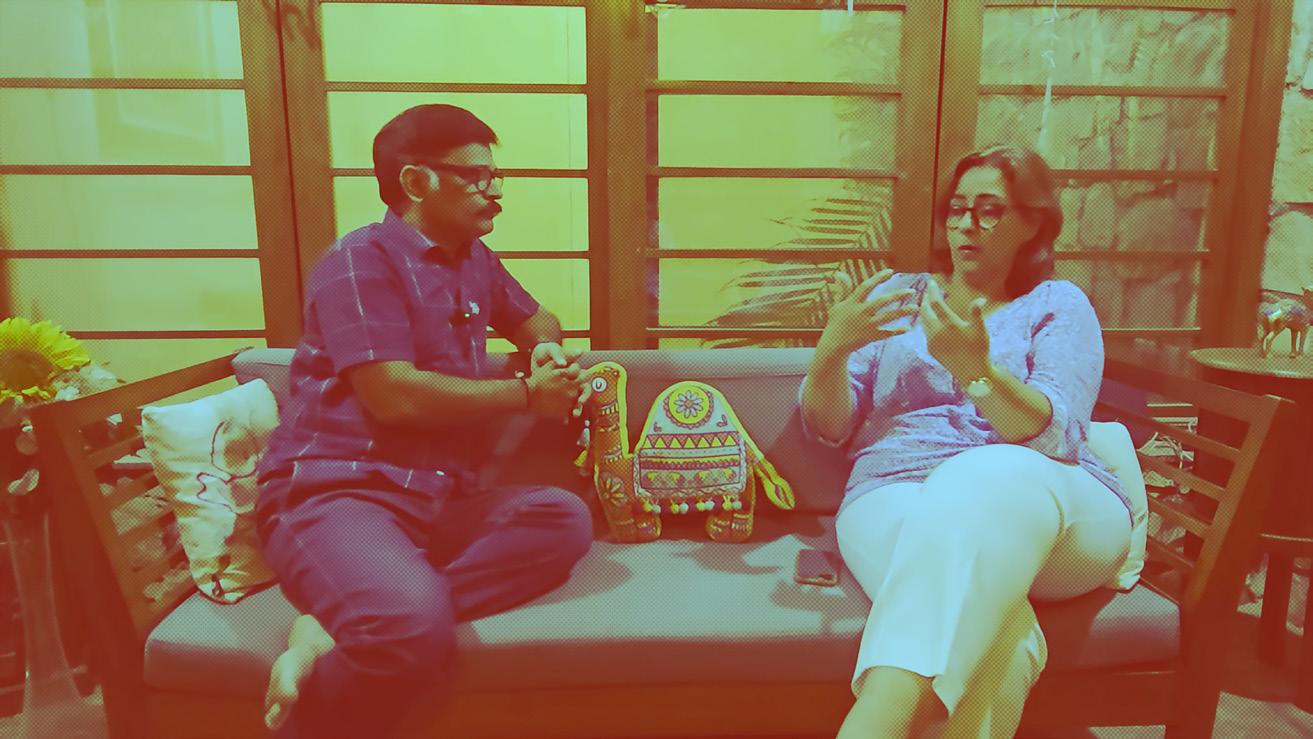

3 Issue 18 | Feb 2024
Manoj shared
Major Shrimp Producers:
and India



Local Market Development
Although expanding into the global market is crucial, Yahira also acknowledged the importance of the local market, especially for large countries like India. She appreciated the successful local market campaigns initiated by Manoj through the seafoodbased restaurant Zhianglala in Surat, India. According to her, such initiatives should be replicated on a larger scale nationally to boost domestic consumption.
“It would be beneficial if every state or the central government had a program to promote consumption. Perhaps working through associations could help. Also, collaborating with the education system to educate people about the nutritional value of shrimp and its high quality as an Indian product could be effective.” she suggested.
Brazil is an example of how they can optimize the local market well. According to Yahira, Brazil successfully markets its entire shrimp production, around 100,000 tons, for the local market. Similarly,
India, with a population of 1.5 billion, has enormous potential to optimize the local market.
Manoj agreed on the vast potential of the local market in India. He said that with India’s vast population, even a modest increase in per capita consumption could translate into substantial volume growth. While transforming the domestic market won’t happen overnight, concerted efforts from every farmer, united by a shared goal, can make a significant difference. In five to ten years, succeeding generations may reap the benefits of a thriving domestic market.
Instead of viewing each other as competitors, Yahira believes that Ecuador and India should collaborate to promote seafood consumption globally. This collaboration should focus on raising awareness and demand rather than engaging in price wars. Together, they can showcase the quality and nutritional value of their products to the world.
 *Yahira Piedrahita stated that her statements during the discussion were personal opinions rather than representing The CNA
Manoj M. Sharma and Yahira Piedrahita shared the shrimp update in Ecuador and India
Shrimp pond in India
*Yahira Piedrahita stated that her statements during the discussion were personal opinions rather than representing The CNA
Manoj M. Sharma and Yahira Piedrahita shared the shrimp update in Ecuador and India
Shrimp pond in India
4 Issue 18 | Feb 2024
- AB
Yahira Piedrahita visted Manoj’s shrim farm in India
THE CRUST
Photo source : doc. manoj m. sharma
TRANSFORMING SHRIMP FARMING WITH THE TOMOTA FARM MANAGEMENT SYSTEM

In the realm of aquaculture, where tradition meets innovation, shrimp farming stands at the forefront of a significant evolution. The Tomota Farm Management System heralds a new dawn, equipping farmers with the means to navigate the complexities of modern aquaculture through enhanced operational efficiency and strategic insight. This article dives into how this pioneering technology not only optimizes farm management but also demonstrates its impact through real-world application, with a particular focus on its adaptability across diverse regions such as Indonesia.
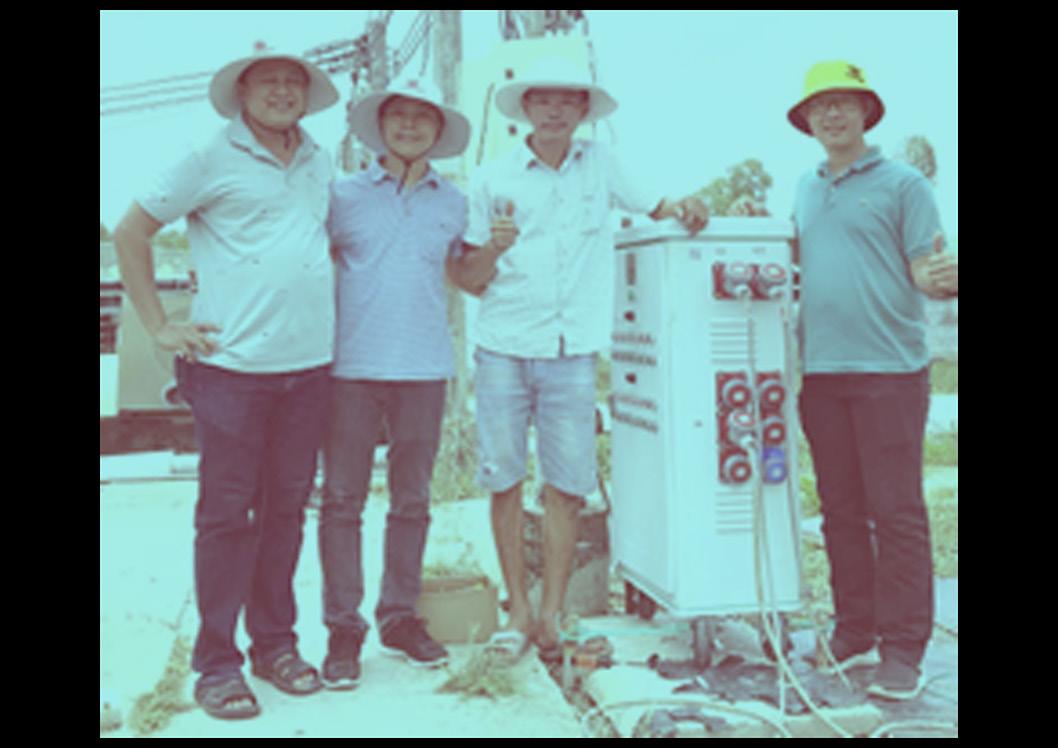
Enhancing Traceability and Financial Management
Tomota’s farm management system is a testament to the industry’s progression, offering a holistic suite of tools that streamline water quality monitoring, inventory management, and equipment automation. This consolidation of critical data facilitates informed decision-making, driving both productivity and profitability.
The Digital Revolution in Aquaculture Empowering Operations with Advanced Technology
With Tomota, the intricacies of aquaculture operations are simplified through real-time insights into water quality via the A3 module, alongside efficient inventory and equipment management. These advancements significantly reduce manual labor and resource consumption, underscoring a commitment to sustainable and profitable farming practices.
In an era where traceability is paramount, Tomota stands out by enabling easier certification processes and market access. Additionally, it offers robust financial reporting tools and strategic financing options, streamlining operations and facilitating growth.

How These Apply to Indonesian Shrimp Farms
The intricate landscape of Indonesian shrimp farming, with its regional variations in farmgate prices, feed costs, construction expenses, and disease prevalence, underscores the necessity for a data-supported decision-making framework. The Tomota Farm Management System becomes invaluable in this context, offering a repository of historical data that enables farmers to navigate the unique challenges posed by geographical and logistical differences. By meticulously tracking and analyzing past performances and operational metrics, Indonesian shrimp farmers can fine-tune their strategies to achieve greater financial sustainability and resilience against endemic diseases that vary across the archipelago.


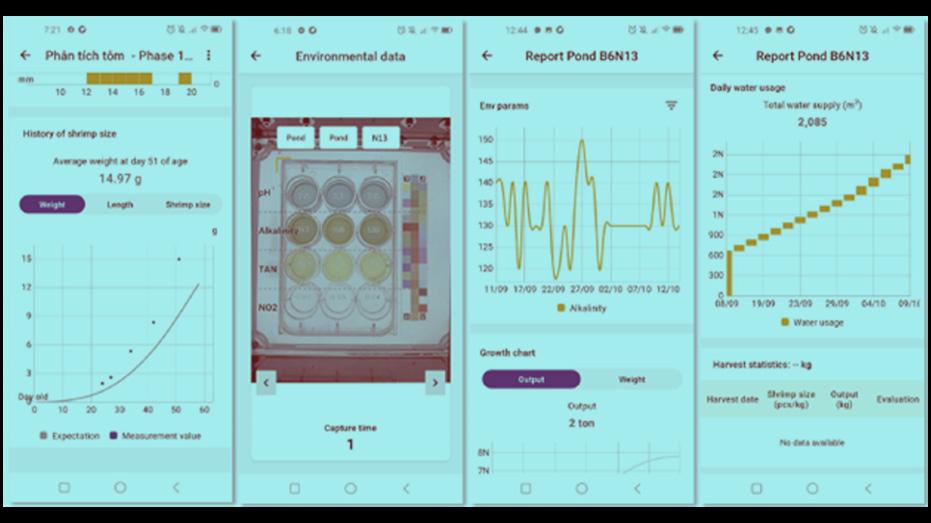
Strategic Adaptations for Enhanced Profitability: The Minh Phu Insight
Minh Phu, a vanguard in the shrimp farming industry, showcases the transformative power of the Tomota Farm Management System. By harnessing historical data, Minh Phu has refined its operational strate-


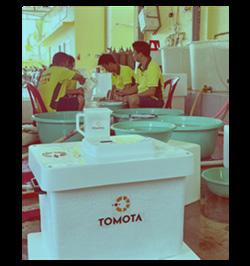
gies to align with market dynamics, adopting lower stocking densities for quicker growth, higher survival rates, and improved feed conversion ratios. This strategic pivot, facilitated by Tomota’s comprehensive data analysis, exemplifies the system’s capacity to drive economic viability amid fluctuating market prices and operational challenges.
THE CRUST - TEQUISA INDONESIA

Looking Ahead
The integration of Tomota’s farm management system marks a pivotal step forward for the aquaculture industry, offering a blueprint for sustainability and growth. By providing detailed insights and automating processes, it allows for precision farming that adapts to regional challenges, as seen in Indonesia, and strategic innovations, as demonstrated by Minh Phu. As the industry continues to evolve, the role of technology in ensuring the profitability and sustainability of shrimp farming becomes increasingly indispensable, heralding a future where data-driven decision-making is at the core of aquaculture’s success.
5 Issue 18 | Feb -2024 FISH SCHOOL
Photo source : doc. tomota


The Giant Potential of Indonesian Spiny Lobster
Starting from his curiosity in 2018, Effendy Wong, a spiny lobster cultivator in Tapanuli Tengah, North Sumatra, began his farming venture. Speaking to The Crust, Effendy conveys that his journey has experienced ups and downs, and he only began to feel the profits in the past two years. “From 2018 to 2022, it was like riding a rollercoaster. It was essentially just research. From 2022 until now, there is finally some clarity,” he says.
Effendy, also known as Aseng, initially followed lobster cultivation guidelines from the Ministry of Marine Affairs and Fisheries (KKP) and attempted to use floating net cages (KJA) usually used for marine culture. However, with no luck, he had to rethink and eventually resorted to adopting what Vietnam was doing, which involved farming using smaller and submerged cages (kerangkeng).
More Effective with Submerged Cages
Aseng finds that many lobster farmers in Indonesia still use floating cages for rearing, but he considers this method to be updated. He notes that Vietnam, a major spiny lobster supplier to China, has moved away from floating cages and now employs submerged cage systems.
Aseng explains that lobster seeds, particularly puerulus (clear lobster seed), are very small. Therefore, he utilizes two different cage sizes. Initially, he employs small tubular cages with an 80 cm diameter, each capable of accommodating 40-50 puerulus seeds. Once the lobsters reach a weight of 10-20 grams (known as cricket size by local farmers), they are transferred to larger cube cages measuring 3 x 3 x 1.5 meters, with a density of 350 individuals. As the lobsters continue to grow, the cage density gradually de-


creases, with a maximum of 120 lobsters per cage. In total, Aseng managed to cultivate 4,000 lobsters with a team of 6 workers.
The submerged cages, as their name suggests, are positioned at least 7 meters below the sea surface, suspended without touching the seabed. They are equipped with special funnels that extend to the water surface to facilitate feeding. Regular cleaning is essential to remove leftover feed and molted shells from the cages. Aseng personally inspects and maintains his lobster cages every three days. From this experience, Aseng emphasizes the importance of lobster farmers possessing proficient diving skills.
This method works well for both Scalloped spiny lobsters (Panulirus homarus) and Ornate spiny lobsters (P. orna-
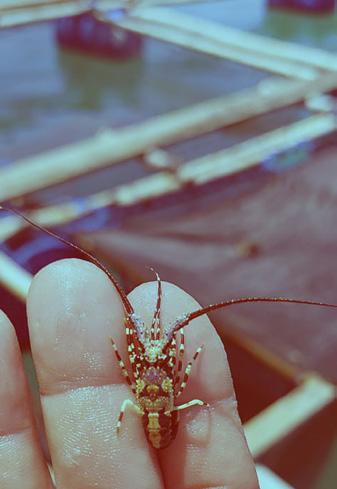

tus). The main difference lies in their sizes, with Ornate lobsters often being larger than Scalloped ones when fully grown. It takes approximately 1-1.5 years to rear lobsters from clear seeds to a harvestable size, typically ranging from above 0.5-1 kg.
To ensure the optimal growth, Aseng feeds his lobsters with a variety of clams and trash fish readily available around the farming area. The cost of feed and maintenance, from the puerulus to harvest size, typically ranges around IDR300,000/kg. During the cultivation period, one kilogram of lobster can consume up to 20 kilograms of feed.


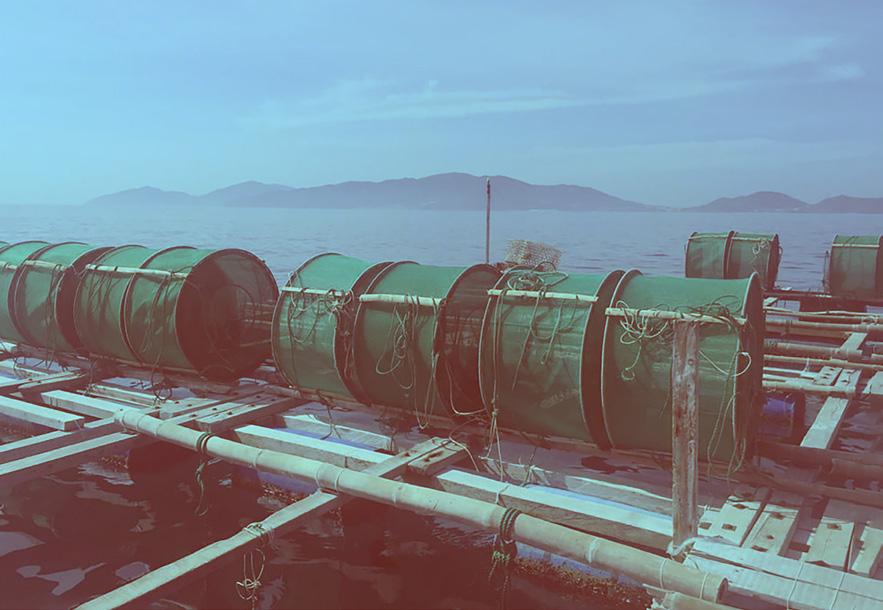
7 Issue 18 | Feb -2024
ARTICLE
Submerged cages for puerulus rearing
Ornate spiny lobster
Baby lobster
Effendy Wong

Potential Lobster Farming

Big Potential, Significant Challenges
When discussing locations, Aseng recommends opting for waters with gentle waves but still possessing currents, without the necessity for strong ones. “Lobsters still require currents. Without adequate currents, it’s not good for them. It’s also crucial to choose a location close to feed sources. These locations can include straits or bays,” he elaborates.
Additionally, Aseng advises farmers to commence farming using puerulus. “Avoid raising lobsters from undersized ones (ed: under consumption or medium size)
Ideal Farm Location
as they are more susceptible to disease and less efficient,” he advises.
This potential risk comes from medium-sized lobsters that have been in the wild for a long time, making them susceptible to stress when transferred to grow-out farms, which can significantly harm their health. Additionally, if lobsters become ill, it may lead to outbreaks that could affect water quality. Therefore Aseng recommends raising lobsters from clear seeds to help them adapt to submerged cage life early on, minimizing stress.
Capturing the Export Market
Aseng sells almost all of his harvest to traders for export to various countries, including China. Scalloped spiny lobsters target the middle market with a price of IDR450,000/kg as of March 2024. Meanwhile, Ornate spiny lobsters target the premium market with higher prices. Yet currently, the price trend is declining, where a 500-gram Ornate spiny lobster is priced at Rp550,000/kg. Whereas last year, this size could reach Rp800,000/kg.
Meanwhile, for large lobsters weighing over 1 kg, the latest price (March 2024) is IDR900,000/kg. This price has also decreased compared to the previous year when it could reach IDR1.2 million/ kg. The lobster price tends to decline due to the impact of market fluctuations in China,
which affect the decrease in the demand. However, the good one is cultivators still make a profit.
On the other hand, Indonesian lobsters do indeed compete with Vietnamese in the Chinese market. The competition is further intensified by higher logistics costs due to the greater distance from Indonesia to China compared to Vietnam. By shipping live lobsters in styrofoam via air routes, Aseng estimates that the cost of shipping can reach IDR75-80 thousand/kg.
In addition, Indonesian lobsters are still predominantly sourced from wild capture rather than cultivation. Aseng claims that cultivated lobster accounts for less than 1% of total exports. “Meanwhile, Vietnam exports 100% farmed lobsters,” he says.
Aseng sees vast potential in cultivating lobsters, given the open market and the ability to source feed domestically. However, regulatory hurdles continue to impede the growth of farmers. He argues that the export policy of puerulus is particularly harmful, as nearly all seedlings are sent to Vietnam, which is a main competitor.
He estimates the export value of lobster seedlings to reach IDR4 trillion per year. Meanwhile, if these seedlings were raised domestically, the potential foreign exchange generated could reach IDR120 trillion. “Just imagine if we managed that here in Indonesia,” Aseng remarks.
Additionally, he also criticizes the Ministry of Marine Affairs and Fisheries of Indonesia for not having a clear lobster aquaculture roadmap. The existing cultivation guidelines are far behind those of Vietnam, so he suggests promptly creating such a roadmap to foster the development of the lobster aquaculture sector.

THE CRUST - HK, AB
8 Issue 18 | Feb -2024
wong
Photo source : doc.
effendi

JALA Shrimp Outlook 2024: OPTIMIZING PERFORMANCE AND UNIFYING STAKEHOLDERS FOR IMPROVED COMPETITIVENESS
JALA, an end-to-end solutions tech startup for shrimp aquaculture in Indonesia, hosted the Shrimp Outlook 2024 event at Fairfield by Marriott, Surabaya, East Java (8/3). With 339 attendees, including shrimp farmers, processing companies, as well as hatchery and feed mills, the event highlighted the current performance of shrimp farming in Indonesia and strategies to boost productivity in 2024.
Erwin Dwiyana, the Director of Marketing at the Directorate General of Product Competitiveness of the Ministry of Marine Affairs and Fisheries (MMAF), stressed the importance of this event given the current condition in the shrimp industry. Aryo Wiryawan, Chairman of JALA, also emphasized the need for collaboration to succeed globally. Meanwhile Haris Muhtadi, Chair of the Shrimp Club Indonesia (SCI), acknowledged the challenges facing the Indonesian shrimp industry but highlighted how these challenges foster unity and solidarity among industry players.
THE INDUSTRY REPORT 2023
Liris Maduningtyas, Cofounder and CEO of JALA, gave a detailed presentation on assessing Indonesia’s shrimp industry performance in 2023 and important insights for shaping strategies in 2024. She explained, “On average, shrimp pond productivity in 2023 reached 12 tons/ha. To achieve the best profitability, I suggest to cultivate for 7080 days or 100110 days.”
Liris also stressed the importance of optimizing the local market to safeguard the shrimp price from high fluctuation due to export market instability. She further noted that any efforts to ramp up production this year should prioritize environmental sustainability and meticulous data recording.
INNOVATIVE FUNDING
At the event, there were discussions on strategies to secure funding for farmers, titled “The Next Level of Farm Financing.” This panel included George Samuel, Advisor
of PT Agro Bahari Nusantara
Tbk (UDNG), and Susanto from Bank BRI, and was moderated by Cynthia Darmawan. They explored different innovative funding methods that shrimp farmers can use to improve their business prospects.
George Samuel and Susanto talked about the significance of consistently recording data and creating financial reports for farmers looking for bank loans or equity funding. They also encouraged farmers to actively participate in ongoing learning and decisionmaking processes on their farms.
ADDED-VALUE IMPROVEMENT
One of the greatest challenges facing the Indonesian shrimp industry today is the impact of the fluctuating global market. The discussion shifted to the topic “Bouncing Back Stronger on the 2024 Shrimp Market,” discussing strategies to handle the unpredictable nature of the shrimp market. Gunawan Mulyono from the Indonesia
Fishery Product Processing & Marketing Association (AP5I) and Ricky Leonardo from TreeDots participated in the discussion, moderated by Lois Darminto.
The panelists discussed the current state of the shrimp market, highlighting an oversupply of shrimp in the global market and increased competition from producers like Ecuador and China. They emphasized the need to improve the competitiveness of Indonesian shrimp by adding value or processing it to fetch better selling prices.
HATCHERY’S PERSPECTIVE
Recognizing the significant influence of hatcheries on shrimp production, the third panel discussion tackled the theme “Behind the Production of Shrimp Fry.” Industry players in shrimp post larvae (PL) production, including Emiliana Dhian from PT Suri Tani Pemuka, Fivi Najmushabah from PT Central Pertiwi Bahari, and Henry Wijaya from Prima Larvae Bali, discussed strategies to address the challenges in seed production, with Haris Muhtadi moderating the session.
Hatcheries have responded to various shrimp disease issues by continuously improving practices such as tightening screening and implementing biosecurity measures as part of disease control procedures. Additionally, hatcheries ensure the provision of quality live feed rich in EPA and DHA to produce shrimp PL. All these efforts are undertaken as a commitment by hatcheries to supply diseasefree and highquality
9 Issue 18 | Feb 2024

shrimp PL for growout farmers.
SHRIMP HEALTH AND COST EFFECTIVE SOLUTIONS
One company in the aquaculture technology sector, GreenSage Prebiotics, had the opportunity to share their latest innovation for improving shrimp health from within. Selva Kumar, VP of Engineering at GreenSage Prebiotics, introduced its newest product, Pretego. This product utilizes recycled dried coconut kernels (copra) to support shrimp growth and sustainability, as well as the growth of beneficial bacteria for aquaculture. Pretego is expected to help farmers significantly reduce their cultivation costs and improve their shrimp survival rates.
A Baltimore, Marylandbased aquaculture technology company called Minnowtech also showcased its solution. Suzan Shahrestani, cofounder of Minnowtech, highlighted their latest innovation for measuring shrimp biomass using sonar technology with over 95% accuracy. This solution has monitored over 1.3 billion shrimp worldwide.
JALA IS HERE TO HELP FARMERS (#HadirMembantu)
At that event, JALA also unveiled a range of solutions aimed at tackling challenges in the shrimp industry. The JALA App, a software platform for managing shrimp ponds, aids farmers in monitoring current conditions and making datadriven decisions.
The JALA Baruno multiparameter water measurement

tool simplifies the process of assessing and monitoring water quality. Alongside farm technology, JALA also offers cultivation support such as input supplies, funding, and market access. These endtoend solutions from JALA underscore its commitment to assisting in the shrimp farming process.
ENTHUSIASM AND PARTICIPANTS’ HOPES
THE CRUSTUTE, JALA, AB
Jacky, a newcomer shrimp farmer who attended the event, showed his enthusiasm. “The panel discussion on new funding alternatives for shrimp is very inspiring, providing detailed insights for those of us looking to enter this industry,” he expressed. Another attendee, Haviel, also showed enthusiasm for JALA’s Shrimp Outlook report. “I find the Shrimp Outlook presentation session very interesting because it discusses the ups and downs of the shrimp industry last year,” he remarked.
At the second annual Shrimp Outlook, attendees use it as a platform to review shrimp farming performance from the previous year and strategize for the current one. Despite challenges like decreasing productivity and unpredictable shrimp prices, farmers are urged to persist with regular data recording. This enables them to gain deeper insights into farming performance, make informed decisions, and enhance future funding prospects.
In order to lessen the shrimp industry’s reliance on the export, all stakeholders need to focus on boosting local consumption. Given the persistent threat of shrimp diseases, both hatcheries and farmers must stay vigilant by applying biosecurity measures across their operations. Let’s hope this event serves as a chance to expand horizons and bring new optimism to everyone involved in the shrimp industry.
JALA is leading tech startup in developing endtoend solutions for shrimp aquaculture. The mission is to enhance shrimp farming production, profitability, and sustainability. Its products and services cover the entire farming process, from cultivation to the industrial supply chain. JALA offers access to consultancy and farming assistance, farming inputs and funding, cultivation technology, as well as harvesting services and market access.
JALA ensure that sustainability is prioritized throughout the processes. JALA has been trusted by over 15,000 users to monitor more than 20,000 tons of shrimp in over 30,000 ponds through its hrimp farming app, JALA App. Moreover, over 10,000 tons of shrimp have been harvested with JALA.
For further information:
VP of Marketing JALA clara@jala.tech | https://jala.tech

Advertebrate
10 Issue 18 | Feb 2024
JALA CEO Liris Maduningtyas shared insights on Indonesia’s shrimp industry performance in 2023 and key findings for shaping the 2024 strategy.
Photo source : doc. JALA
ABOUT JALA
A Quick Update on Antidumping and Countervailing Duties
The US Department of Commerce (DOC) and US International Trade Commission (ITC) received a petition from the American Shrimp Processors Association (ASPA) on October 25, 2023, addressing the possibility of antidumping (AD) and countervailing (CVD) duties on such imports of frozen warmwater shrimp from Ecuador, India, Indonesia, and Vietnam. These imports totaled $6.66 billion in 2022, indicating the significant scale of trade involved.
According to the AD suit, the frozen shrimp imports from Ecuador and Indonesia sold in the US below fair value are considered “dumped” or “waste”. ASPA requested duties to be levied at a rate of 111.4% on Ecuador and 37.36% on Indonesia. According to the CVD appeal, the governments of Ecuador, India, Indonesia, and Vietnam likely provided remediable subsidies for the production and export.
If the petitions were successful, importers of frozen warmwater shrimp from Ecuador and Indonesia would face new AD and CVD duty liabilities. In addition, Importers from India and Vietnam, who already face AD duties, would see their responsibilities increase.
The allegation of dumping harmed the Indonesian shrimp industry. Regarding shrimp product exports to the US, many US buyers have imposed provisions for exporters, requiring that 30% of the sales proceeds be retained, leaving only about 70% of the earnings until a decision on the dumping claim, as an antidumping movement, is established. Given that the US market is Indonesia’s primary market destination, this has a significant effect on the country’s shrimp export sector.
Shrimp prices dropped because exporters had to pass on a portion of the costs to producers. This decline prompted producers to temporarily halt production, as they needed time to assess the associated risks. In response to the submitted petition, the Indonesian government, along with the Ministry of Trade, the Ministry of Marine Affairs and Fisheries, and AP5I, convened a meeting to address the antidumping and antisubsidies investigation.


Currently, Ecuador, India, and Vietnam have been positively confirmed for the preliminary determination of their shrimp CVD duties. On March 26, 2024, the DOC announced its preliminary affirmative determination in the CVD investigation for Ecuador, India, and Vietnam, while the investigation for Indonesia resulted in a preliminary negative determination. Additionally, concurrent AD investigations of shrimp from Ecuador and Indonesia are underway.
This condition allows for the potential imposition of tariffs, which could provide initial protection to domestic businesses. Since duties are not imposed based on the preliminary findings, importers may experience temporary relief from duties if there is a negative preliminary determination. However, this does not guarantee that there will be no obligation in the future, as the investigation will continue.
According to the findings of DOC, which will be finalized in September 2024, shrimp exports from the three countries to the US will be subject to a minimum CVD once the findings are published in the Federal Register. Certain companies may face higher or lower rates as a result of these findings.
Based on the preliminary determination, Ecuador is facing an overall 7.55% CVD on all shrimp exports, India is subject to a 4.36% CVD, and Vietnam has been assigned the lowest duty rate of 2.84%. Upon investigation by the DOC, Indonesia was found to have subsidy rates below the threshold requiring CVD duties.
The DOC will not make its final determination until August 5, 2024, while the ITC must reach a final decision by September 19, 2024, before an order is issued on September 26, 2024. According to the DOC, an order will only be issued if it is proven by both the DOC and the ITC that the shrimp industries in the three countries received subsidies from their governments.
After the preliminary determinations are published in the Federal Register, importers shall deposit cash equal to the rates set by the DOC for up to four months with US Customs and Border Protection. Based on historical data, if the duties remain in place, the shrimp industries of these countries will have to pay significantly higher fees to export to the US.
Will this bring new hope to Indonesia’s shrimp industry? All we can do is wait and see until a decision is reached.
THE CRUST - MIDA
WET MARKET 11 Issue 18 | Feb -2024

WHY ANTIBIOTICS STILL USED DESPITE HAVING BETTER ALTERNATIVES?
 Melony Sellars CEO and Managing Director of Genics
Melony Sellars CEO and Managing Director of Genics
Despite the lack of evidence for its efficacy, routine “preventative” livestock antibiotic dosing is still common in many countries. Meanwhile, the detrimental consequences of antibiotic overuse, such as eroded antibiotic effectiveness and the threat of antibiotic-resistant pathogens, are well established.
However, in this era of highly accurate early-detec-
tion pathogen testing, we now have effective and affordable alternatives to routine antibiotic dosing. Farmers have strong incentives to shift away from excessive antibiotic use and embrace modern pathogen testing technology. Not only is it readily accessible, but it’s also more cost-effective, safer, and represents a valuable investment in the future productivity of livestock breeding programs.
Agricultural Antibiotic Reform is Overdue
In 1969, a British government committee investigated the use of antibiotics in agriculture following an outbreak of antibiotic-resistant Salmonella, linked to antibiotic overuse, which claimed six lives. The resulting report, known as “The Swann Report,” laid the groundwork for regulating farm antibiotic use through legislation. The report was strongly critical of contemporary veterinary practices, which provide for the occasional use of antibiotics in healthy animals as a preventive measure against the onset of certain diseases.
Despite the Swann committee’s strong findings in 1969, its authors opted for

conservative regulatory recommendations. They focused on discouraging antibiotic overuse for growth promotion, a prevalent practice then, but didn’t suggest ending other questionable routine uses, like “disease prevention.”
The Swann Report had little impact on agricultural practices. In the 20th century, most farmers lacked accessible, affordable alternatives for disease prevention. While some countries introduced new regulations requiring veterinary prescriptions for livestock antibiotics, farm antibiotic overuse and resistance continued to rise.
Fifty years after the Swann
Genetic breeding and lab testing combat aquaculture diseases effectively
Report, in April 2019, the Interagency Coordination Group on Antimicrobial Resistance (IACG) published another report on agricultural antibiotic use and resistant pathogens. Like the Swann authors, the IACG stated that the use of antibiotics for growth promotion and routine “prevention” were both contributing to antibiotic resistance in livestock. In other words, farmers were still spending good money to dose their livestock with antibiotics, with minimal impact. Instead of shielding animals from disease, antibiotic overuse was exacerbating a cycle where animals became increasingly vulnerable to pathogens with each generation.

Modern testing improves pork farming health outcomes

13 Issue 18 | Feb -2024
Modern Testing
Photo source : doc. Genics
ARTICLE
Modern Commercial Pathogen Testing is a Better Alternative
In 2022, the EU introduced new rules on the use of antibiotics in agriculture. Designed to curb antibiotic overuse on European farms, one of the principal EU regulations decreed the cessation of “preventative group treatments.”
So, how is the EU able to take such uncompromising action without concern about disease outbreaks on farms? The answer is that EU regulators are following the science and know they can rely on more modern approaches to disease management utilizing genomic profiling and PCR pathogen testing technology.
Unlike routine antibiotic dosing of livestock, clinical PCR (polymerase chain reaction) pathogen testing doesn’t have collateral adverse outcomes for future livestock health. Rather than unnecessarily squandering antibiotics treating healthy animals, farmers can use pathogen lab testing services as a diagnostic screening system. It makes early pathogen detection possible so farmers can focus their efforts on the specific diseases that are a real and immediate threat.
Genetic profiling is also a powerful tool to increase disease resistance in animal populations. With consistent genetic monitoring, farmers can selectively breed animals that become more resistant to disease, generation by generation. This starkly contrasts with the routine antibiotic dosing paradigm, where animals are effectively incubators for increasingly virulent and destructive pathogens.
Although readily available commercial PCR lab testing for agriculture is relatively new, the concept of disease screening as an alternative to antibiotic dosing is well established. In their 1999 publication “Approaches to Minimizing Antibiotic Use in
Food-Animal Production,”
the United States National Research Council Committee on Drug Use in Food Animals stated that molecular biology approaches, particularly genetic strategies utilizing molecular genotyping techniques, can enhance selection for advantageous traits, including disease resistance in livestock. Traditional breeding strategies often focus on one trait at a time, but genetic-marker-assisted selection allows for simultaneous improvement in multiple traits, such as production and disease resistance.
The National Research Council determined that enhancing immunity via strategic breeding could be an alternative to agricultural antibiotic overuse. Although the implementation of those ideas was futuristic in the 1990s, these techniques are the foundation of today’s industry-leading breeding programs, which are underpinned by disease detection and management services.
With modern genetic profiling services, farmers can implement breeding programs to increase the disease resistance of their animals generationally. While antibiotic dosing weakens disease resistance over time, the DNA-supported breeding approach produces livestock that are more resilient, as well as more productive.
In the current era, when routine PCR testing and genetic livestock monitoring are readily available and highly affordable, there’s no reason to perpetuate the unhealthy practice of antibiotic overuse. Certified laboratory testing and rapid disease screening protocols not only preserve the efficacy of antibiotics, they also offer far more precise and efficient disease control capabilities on farms.

The Way Forward for Farm Productivity and Human Health
More than ever before, overusing and misusing antibiotics in farming is widely seen as an unacceptable risk. The World Health Organization (WHO) has long highlighted the dangers of antibiotic overuse in farming, which not only impacts livestock health but also affects human health.
To combat this, disease prevention techniques such as PCR pathogen testing and genetic breeding programs offer a more secure pathway to sustainable agricultural outcomes. These modern approaches not only serve as effective defenses against epidemics but also reduce the costs associated with health
management. Livestock populations managed through genetics, with enhanced disease resistance and reduced antibiotic exposure, are ultimately more resilient, resulting in lower expenses related to disease mitigation.
Of course, improved animal husbandry, proper nutrition, and biosecurity are all crucial factors in overcoming agricultural antibiotic dependence. But the only way producers can ensure their livestock are protected is by regular testing with certified, laboratory-grade pathogen detection and a systematic, proactive approach to breeding for disease resistance.
THE CRUST - AB
 Jeremy Brawner Head of Genetic Solutions of Genics
Jeremy Brawner Head of Genetic Solutions of Genics
14 Issue 18 | Feb -2024



RETRO TECH THROWBACK
In today’s fast-paced world of ever-evolving technology, getting swept up in the latest gadgets and innovations is easy. But amidst the buzz of futuristic advancements, there’s something undeniably charming about looking back at the tech treasures of yesteryears. In this article, we journey down memory lane as we revisit some iconic gadgets that continue to evoke nostalgia and fascination among tech enthusiasts.
Let’s start with a true classic: the Atari 2600. Released in 1977, this legendary gaming console revolutionized the way people experience video games at home. With its simple joystick and blocky graphics, the Atari 2600 introduced an entire generation to the joys of gaming. From timeless classics like “Pac-Man” and “Space Invaders” to the pixelated thrills of “Pitfall,” the Atari 2600 remains a beloved relic of gaming history, reminding us of simpler times when gameplay was king.

Moving forward to the 1980s, we encounter another icon of retro-tech: the original Sony Walkman. Before the era of smartphones and streaming services, the Walkman redefined how we listened to music on the go. With its compact cassette tapes and lightweight design, the Walkman allowed music lovers to carry their

favorite tunes wherever they went. Whether you were rocking out to Duran Duran on the school bus or unwinding with some soothing jazz on a lazy afternoon, the Walkman was a constant companion, providing a soundtrack to our lives.
Fast forward to the early 2000s, and we reminisce about the humble Nokia 3310. Renowned for its durability and long battery life, this iconic mobile phone became a cultural phenomenon in its own right. With its monochrome display and iconic game of Snake, the Nokia 3310 captured the hearts of millions and became a symbol of reliability in an increasingly digital world. Even today, amidst a sea of sleek smartphones, the Nokia 3310 remains a beloved reminder of a simpler era of mobile communication.
But the nostalgia doesn’t end there. Let’s not forget about the timeless charm of the Polaroid camera. In an age where digital photography reigns supreme, there’s something magical about the instant gratification of snapping and watching it develop before your eyes. With its iconic white frame and retro aesthetic, the Polaroid camera has experienced a resurgence in popularity among photography enthusiasts and hipsters alike, proving that sometimes old school is the coolest school.
As we reflect on these vintage gadgets, it’s clear that they hold a special place in our hearts for more than just their technological prowess. They represent moments of joy, nostalgia, and connection, serving as tangible reminders of the past and the progress we’ve made along the way. So, the next time you find yourself caught up in the whirlwind of modern technology, take a moment to appreciate the timeless appeal of these retro treasures. After all, sometimes, the greatest innovations are the ones that stand the test of time.

-2024
15 Issue 18 | Feb
THE CRUST - RIZKY
wikipedia
Photo source :
BREAK TIME


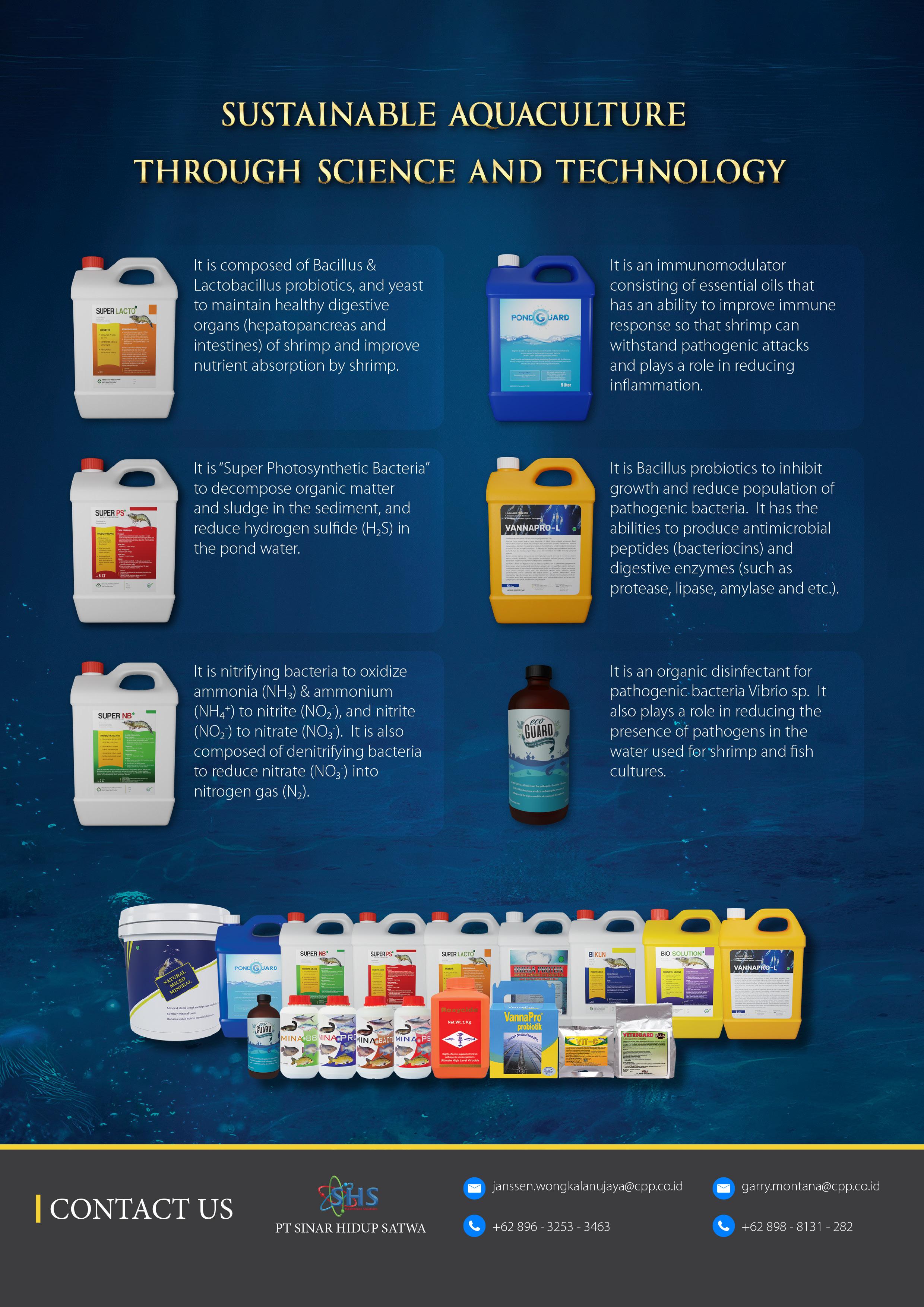
CONTACT In WeCrust Trust

Shrimp is love Shrimp is life
The more the more how little I understand. So stay and keep on
Rizky
Darmawan
Denny Leonardo


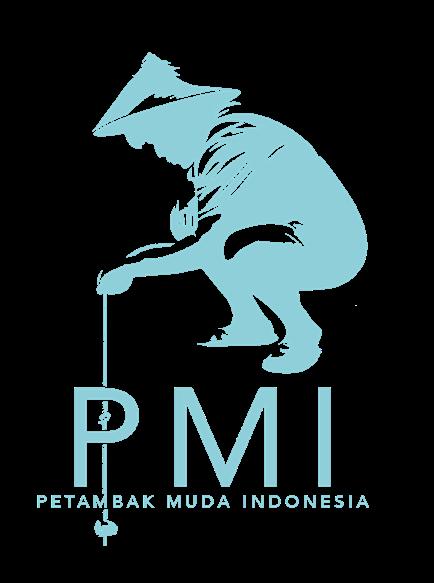
Contact Us admin@pmindo.com Cover art by Rizky, Al - Ad Rosebay Unit A101, Graha Famili, Blok W, Pradahkalikendal, Kec. Dukuhpakis Kota Surabaya, Jawa Timur 60227, Indonesia
Lim My secret to joy in life is in finding balance. Balance in family, sweating, and making decisions. Rizky Darmawan more I know, more I realize understand. humble on learning.
Gemilang





 Rizky Darmawan Chief
Photo source : The CRUST
Rizky Darmawan Chief
Photo source : The CRUST



























 Melony Sellars CEO and Managing Director of Genics
Melony Sellars CEO and Managing Director of Genics



 Jeremy Brawner Head of Genetic Solutions of Genics
Jeremy Brawner Head of Genetic Solutions of Genics









